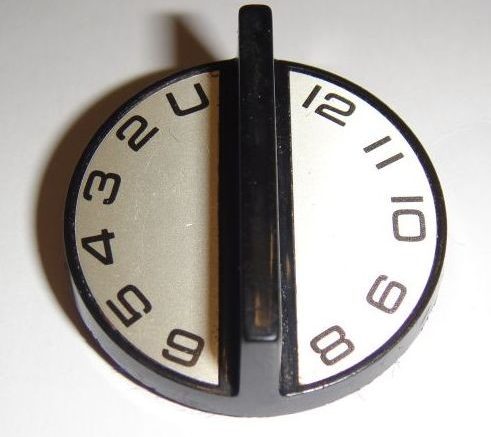Did you ever wonder what ever happened to Channel 1? Back in the days before cable and satellite, many a youngster stared at a knob like the one in the picture and wondered. Channel numbers were more important then, because there were very few channels and no electronic program guide. (That’s right kids, we had to look through a magazine to see what was on! How arcane!)
How it started
A long time ago when television was in its infancy, there was a channel 1. In fact the original television plan had 19 VHF channels. Channel 1 was a casualty of bad planning. Remember, this was all very new at the time. Before World War II, the frequencies used for both Channel 1 and Channel 2 were also used for private radio broadcasts, things like police cruisers. There weren’t too many cars with radios and there weren’t too many TVs, either, so it wasn’t too much trouble.
World War II saw a huge leap in electronics and broadcasting, and after the war, more cars were equipped with radios. There were also military-style walkie-talkies, green boxes that looked like this:

Yes, at one time that was considered “small.” All this extra broadcasting created a problem because TV transmitters overlapped communications between police dispatchers and their cars, and any cruiser driving by could send a TV set into fits. Something had to be done.
The end of channel 1
In 1948 the FCC took Channel 1 away from television broadcasters, and took Channel 2 away from commercial radio, so nothing could overlap and everyone could be happy. They decided not to renumber the channels, instead just leaving a big gap in the knob where Channel 1 used to be. When UHF broadcast channels were allocated, a letter “U” was placed there to allow you to use a secondary knob for tuning UHF channels.
A generation later, cable TV stations continued the tradition, and a generation after that, the digital transition kept all the channel numbers that were so familiar to people. The frequencies that were actually used for channels 2 – 6 were surrendered, but the PSIP system lets you think you’re watching Channel 2 when you might be actually watching channel 43.
At the same time as cable began to compete with broadcast TV, Channels 70-83 very quietly disappeared from TV broadcasting. These channels were very rarely used — no market was crowded enough to need them — and the frequencies were used for public safety professionals.
When TV went digital, channels 52-69 were reassigned for other purposes. A lot of those frequencies went to cell phone service companies. Of course we all know that there’s a huge demand for cellular data. Those frequencies were used for that purpose. Demand for data continues to get bigger and bigger. In the years since, channels 36-69 were taken away from TV broadcasting. With digital TV, there’s no need for a “spacer” channel between two broadcast channels. So, most markets work just fine with just 34 television frequencies. Most could do with a lot fewer, as it’s now possible to fit two HD channels on one broadcast channel.
The good news about TV antennas
There’s good news here, though. It doesn’t matter if TV is analog or digital. It doesn’t matter if there are 33 channels or 83 channels. Nearly every TV antenna ever made will still work to get free live TV. You still might want a new antenna because you want something that works better, though. That’s where Solid Signal comes in. Shop at Solid Signal for the best selection and price on TV antennas!





